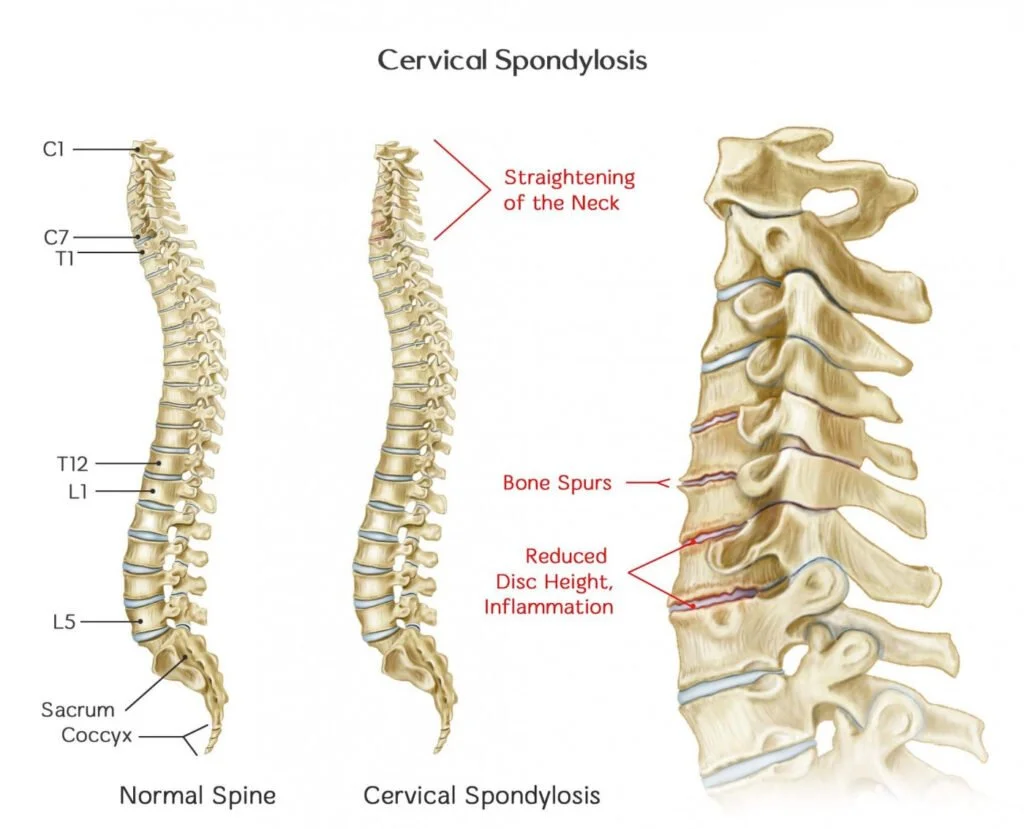Spondylosis: What It Really Means for Your Spine
Learn what spondylosis is, how it affects your spine, and discover expert-backed ways to find relief. Real insights from physiotherapists & chiropractors.
That nagging back or neck pain? It might be spondylosis
I gradually crave in the morning, pain in the lower back mat after a long time at the desk, or pain in this sharp jerk when facing the wrong direction. I’m not wary at first. Just… there. Continuous. Stubborn.
For many people over 40, this is more than just older than you.
But here’s the order: It sounds threatening, but spondylopathy is not a disease. It’s a structural change. Attitudes, exercise habits, and even stress are indications of how life can impress our body’s lives over time. And good news? You are not helpless considering this.
We disintegrate with what spondylopathy really is, why she happens, and the way you can manage it intellectually – not just the medicine, but with movement, alignment, care that actually deals with roots.
What exactly is Spondylosis?
In the core, spondylopathy refers to degenerative changes in the spine – consider the thinning of the disc, osteospores and joint stiffness. It is most common in the neck (cervical Spondylosis) and waist (lumbar spinal cord).
What causes it?
Aging is the biggest factor, but that’s not the only one. Yes, your screen time plays a big role. Here it goes to drive it:
- Set habits (hello, 9 vs 5 desk job)
- Bad attitude, especially leaning forward and technical head
- Repeated stress due to lifting, bending, and even lie
- Previous spinal injury or trauma
- Genetic predisposition
Over time, these stressors lead to dryness and reduced discs, loss of upholstery items, and additional bone growth (bone feces) in the body’s troublesome tests to stabilize the stressful spine.
How Spondylosis Feels: Symptoms You Should Be Careful
It’s easy to shake off early symptoms, but you know what to look for. Here’s how Spondylosis can feel:
- Chronic neck and back pain – often bad in the morning or after sitting
- Rigidity that walks with movement
- Pain in the arms and legs shines (when nerves are fixed)
- Stinging, hearing loss or weakness
- Headaches coming out of the neck
- Loss of balance or adjustment (in severe cases)
Not everyone has symptoms – some people have advanced degeneration and rarely notice them. Others fail early due to neural compression. In this case, imaging and expert evaluations take place.
Diagnosis: How experts identify spondylosis
At Chiroveda, we approach this with a mix of clinical testing and imaging studies:
- X-ray of bone changes
- Assessing MRI disk health and neural compression
- Physical tests of areas of motion, reflexes, and nerve involvement
We also pay attention to the way you go, the patterns of sitting and sitting movements.
Managing the spine: What actually works?
Here is the truth: it is not a disease, so there is no cure. But management? Here, the right combination of care can change everything.
1. Chiropractic adjustment
Gentle and targeted spine manipulation:
- Improve mobility
- Reduces nerve stimulation
- Promote better orientation and attitude
2. Physical Therapy and Orthodontic Exercise
Not just stretching, we’re talking with TaylorMade routines:
- Strengthen the core and back muscles
- Restores spinal flexibility
- Correct movement disorder
3. Posture coaching
The high-tech neck is genuine and reversible. We guide patients through ergonomic corrections and daily movements that reduce future stress on the spine.
4. Drying needles and soft tissue work
When the muscles around the spine tense from chronic pain, soft tissue therapy, dryness, it can help satisfy the tension and improve blood flow.
Spondylosis is not at the end of the beginning of clever spine health
When dealing with the spine, it’s not about repairing the spine. It’s about carefully supporting you in respecting how you move, live and age.
No, that doesn’t mean endless painkillers or horrible manipulation. It means better habits, expert direction, and a commitment to making better moves.
Why choose Chiroveda for spondylopathy treatment?
At Chiroveda, we mix chiropractic accuracy with physical therapy insights under one roof. Our clinic in [city/region] specializes in:
- Chronic Pain and Degenerative Spinal Disease
- Functional exercise rehabilitation
- Non-invasive, drug-free care strategies
- Personalized treatment plans that make measurable advances
Whether you’re newly diagnosed or suspect something is completely untrue on your spine, we’re here to keep thinking about you.

